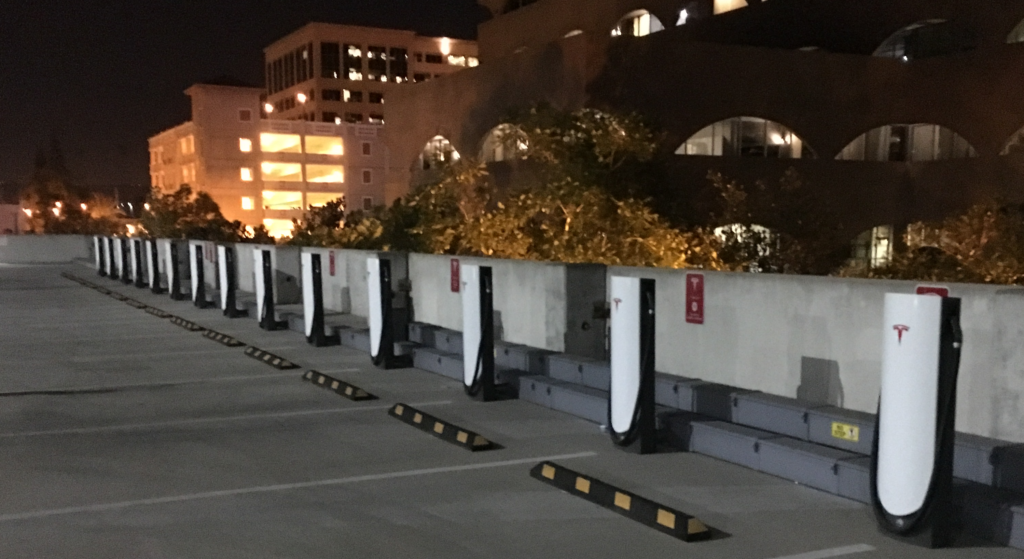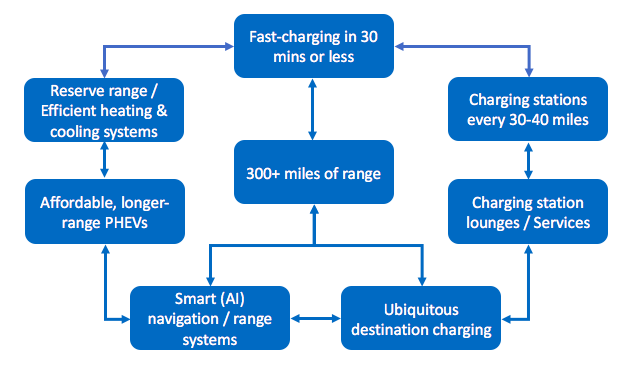The electric vehicle community has been in a huge dither the last few days after Ivan Penn, energy reporter for the New York Times wrote what many felt was a hit job on electric vehicles. In fact the article got some things wrong about EVs and road tips, but it also revealed some shortcomings of EVs from the legacy automakers.
The worst thing about the article was in fact the title: L.A. to Vegas and Back by Electric Car: 8 Hours Driving; 5 More Plugged In. Five hours extra, seriously?
To better understand what life with an electric car is like, I hopped into a Chevrolet Bolt recently and traveled from Los Angeles to Las Vegas, a 540-mile round trip that many people make regularly. On top of the eight hours or so that we were actually on the road, we spent close to five and a half hours charging the car.
I’ve now done a roughly 900-mile round trip twice in our Tesla Model S 60 which only has a range of about 205 miles, less than the Chevrolet Bolt. The most recent trip in April we left our home in Northern California at 4:30 am on a Saturday and drove to Redlands near Riverside and arrived back home at just before midnight.

We were picking up our daughter’s clothing and dorm furniture. We spent about 2 hours at Redlands University packing up our daughter’s stuff and loading our Model S so there was not a square inch of space left. On our trip we probably stopped two times that we would not have if we were driving an internal combustion powered vehicle. We stopped to charge for about an hour that we would not have stopped each direction – so around 2 extra hours on a 900 mile round trip.
That is quite a difference from the 5 hours that the New York Times reporter described for a much, much shorter 540-mile round trip. The reporter seemed to exclude the time that most people would stop for restroom and food breaks. As anyone who drives an EV knows, you charge while you do other things. On road trips this means using the restroom, stretching your legs and eating meals.
But those normal stops for the Vegas trip might still only take the 5 hours described down to 3-4 hours. Clearly this trip was not an optimal experience.
As many people have pointed out, if the reporter had done the trip in a Tesla he would have had a much different experience. And perhaps that is the point. While I have several issues with the article, the reality is that except for people who drive a Tesla, at least for the moment, long road trips in an electric car are rather sketchy.
3 Keys That The New York Times Article Underscored
While the article was rather one sided, it was in essence a commercial for why you should buy a Tesla with long range and access to Superchargers over other electric vehicles. There are 3 key lessons from the article:
Automakers Must Invest in Ample Fast Charging Locations: From the Bay Area to Los Angeles on Interstate 5 there are 7 Tesla Supercharger stations. This means there are multiple options for fast charging based on your range and preference of where you want to stop. I wouldn’t consider this LA road trip in any other EV than a Tesla.

Except for Tesla and recently Volkswagen with its Electrify America subsidiary, no other automakers have directly invested in building out a fast charging network and creating a seamless customer experience. In addition to having ample locations and charging stations at each location, offering fast charging speeds that can add 150-200 miles in 15-20 minutes is the next key. Those automakers that choose not to invest in fast charging stations will continue to see little uptake on sales of their electric vehicles.
300+ Miles of Range Is Key: My wife and I just took delivery of a Tesla Model S 100D which has 335 miles of range. We can’t wait to drive our daughter back to college in Redlands as this next trip will likely mean we will not stop for any additional time than we would in an ICE vehicle.
Many road trips in America are in the range of 400-500 miles one way which means that an EV with 300+ miles of range may only need to stop one time to charge. Using DC fast charging means that with a meal and restroom break your road trip in an EV might not take any longer than in a gas-powered vehicle. 300+ miles of range for EVs is a key amount of range that will get American consumers over the range anxiety hump.

Education/Ease of Use: Finally, planning your charging stops for a road trip is an entirely new experience. On my first long road trip in 2018 I made one huge mistake in not realizing how much your range forecast can change based on weather, road conditions and driving speed. Automakers need to incorporate artificial intelligence into their navigation systems and make road trip charging fool-proof. As part of these AI-based tools, the navigation planning process should also include educational videos and content that offers up best practice tips.
The New York Times article was very negative toward electric vehicles, but it in fact pointed out the difference in experiences one has driving a Tesla versus other makes of EVs. Until automakers other than Tesla step up to the plate, most US consumers will be reluctant to buy an EV because of range and fast charging shortcomings.


